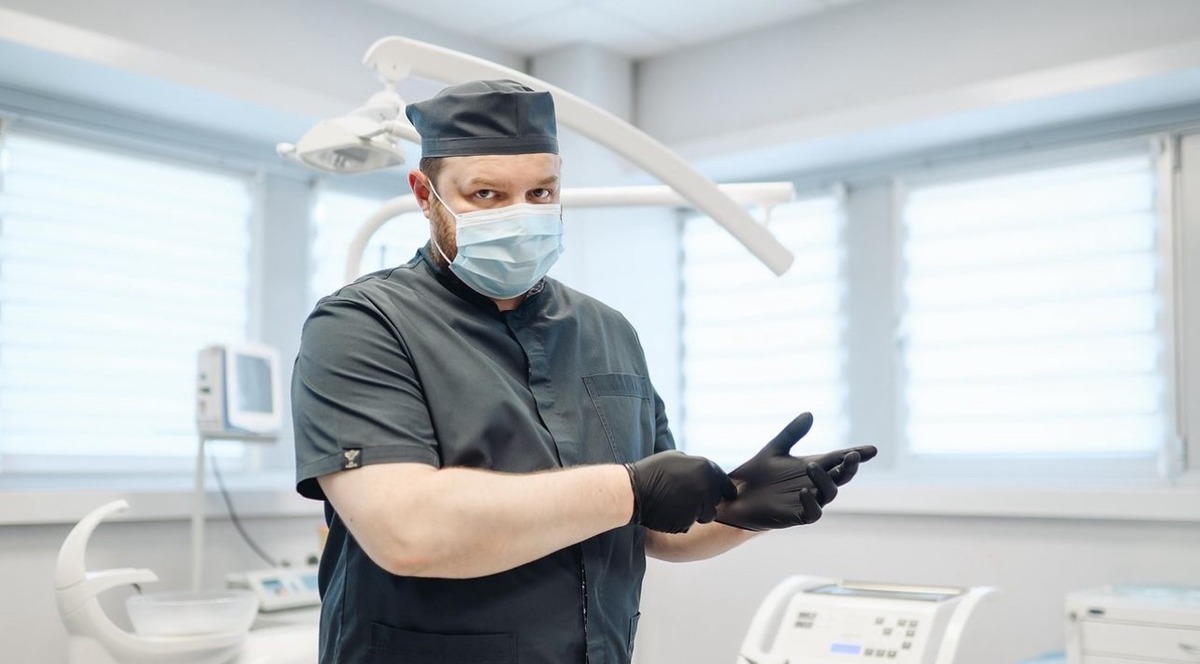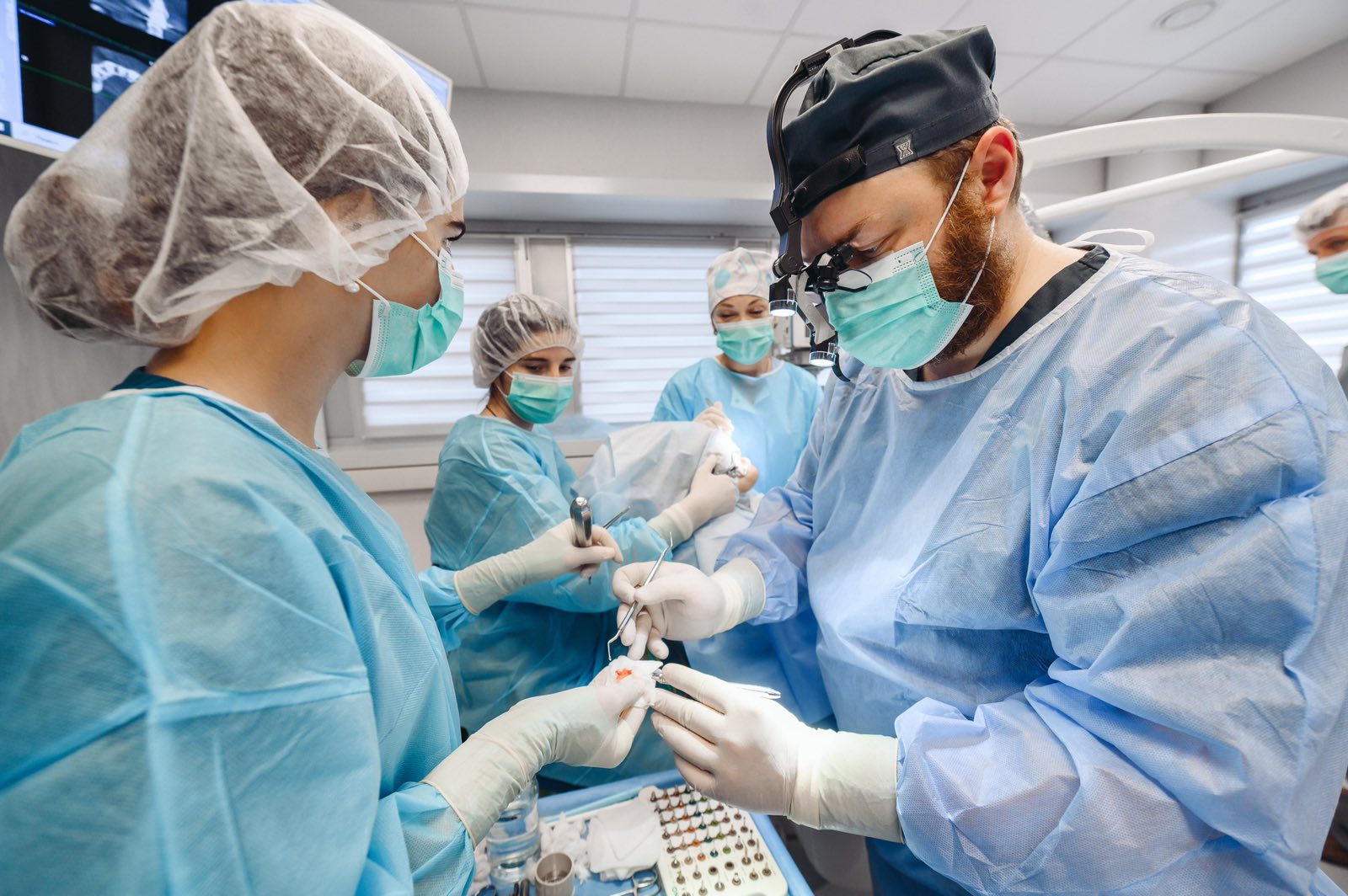2 years ago Dental health
Is it possible to transplant a tooth and why is it necessary

What is tooth replantation/transplantation?
Replantation is the transplantation of one’s own tissue or organ and the provision of its engraftment in a new place. Increasing bone volume by transplanting one’s own bone blocks, replacing a knocked-out tooth, transplanting the embryos of the eighth tooth to the place of the child’s lost sixth — all this is replantation.
The technology of replantation of teeth, including embryos, is not new — it was, in particular, described in textbooks for dentists at the beginning of the last century, but it did not spread due to its complexity. However, we at the Sirius Dent Medical Center successfully carry out replantations and achieve implantation of transplanted teeth.
In what cases is tooth replantation necessary?
Replantation is not the most requested service, but most often we replant the eighth tooth in place of the sixth. However, there are other types of replantation. Indications for tooth replantation are as follows:
- the sixth tooth is indicated for extraction, while the eighth tooth is healthy and can be used for replacement. If we are talking about a child for whom it is basically impossible to install an implant while his jaw is still growing, but it is important to form a correct bite, a figure eight embryo can be used;
- a patient with indications for tooth extraction has supernumerary teeth (for example, two fourths or fifths that grow in a triangle) – in this case, one of the supernumerary teeth is replanted in place of the removed one;
- the patient had a tooth knocked out, but he kept it and brought it to the doctor.
The last option, which involves installing the tooth in the place where it was previously located, is the simplest.
Pros and cons of tooth replantation
Tooth replantation has both its advantages and disadvantages. The advantages of tooth replantation are as follows:
- own tooth, even without a nerve, feels and looks different than a prosthesis;
- during replantation, it is not necessary to additionally install a crown or carry out other manipulations, except depulpation of the tooth being transplanted;
- it is a one-stage operation, that is, the patient leaves the dent medical center already with a tooth, and does not have to wait several months for prosthetics;
- the opportunity to save not only time, but also money: the cost of replantation is comparable to implantation, but the patient will not need a crown and abutment;
- replantation can be performed on a patient of any age. This is the best way to ensure a child’s normal bite after the removal of the sixth tooth, which is the key to occlusion.
As for the disadvantages of replantation, the biggest one is that not all dentists undertake this operation. However, it is a complex technique that requires deep knowledge and practical experience from the surgeon. In addition, in the case when we replant the embryo of the eight to the child, there is a risk that the tooth will not erupt in the end. However, even in this case, the tooth germ performs the function of a kind of biological orthodontic apparatus, which holds a place in the jaw and prevents displacement of the teeth. And when the teenager stops growing, we can remove the embryo and carry out a full-fledged implantation.

How the tooth transplant procedure works
If, as a result of trauma, a tooth has been completely displaced with extraction from the socket, it is important to save the tooth and bring it to the doctor for replantation. If it is not possible to do this immediately, the tooth should be placed in a physiological solution or in real, unreconstructed milk, so that it does not dry out (in this case, we are talking about delayed replantation of the tooth). In general, it is believed that a knocked-out tooth can be successfully replanted within a day of the injury.
The tooth to be replanted is cleaned and treated with an antiseptic, the nerve is removed from it, and the root canal is filled. The holes under the tooth are inspected and usually scraped to remove blood. After that, the tooth is installed in the place where it was previously located.
In a similar way, the wisdom tooth is replanted in place of the sixth. Before the procedure, based on the results of the computer tomography, the doctor prints a model of the wisdom tooth on a 3D printer in order to properly cut a figure-eight bed in the place of the removed sixth tooth. Next, the eight is removed, the dentist-therapist conducts its depulpation and seals the canals, and the surgeon installs the wisdom tooth in the prepared bed.
An important condition for the implantation of a replanted tooth is reliable fixation, so it is glued to the adjacent teeth to ensure maximum immobility and stability.
Engraftment of the replanted tooth takes place according to the type of ankylosis formation (fusion of the tooth root with the jaw bone). If normally there are collagen fibers between the root of the tooth and the jaw bone – small ligaments in the periodontal gap, then during replantation, the periodontium is no longer there, that is, the root of the tooth grows directly with the bone tissue. Sometimes the root is partially resorbed, as in a baby tooth, and sometimes it grows with the jaw so that it becomes impossible to remove the tooth in the future – only sawing it with the bone.
After the operation, the patient must wear a dental splint for three months. This is not a complication after replantation as such, but it can cause discomfort.
Which teeth and to which places can be transplanted?
The most common in our practice is the transplantation of the eighth tooth in place of the sixth, which is already missing or has indications for removal. However, we can also replant supernumerary teeth in place of extracted ones and replace the knocked out tooth if it is intact.
How much does tooth replantation cost?
The price for a tooth replantation operation is comparable to the cost of installing an implant. But during replantation, it is not necessary to put on a crown or carry out other additional manipulations, so because of this, replantation will cost less. To find out the exact cost of the operation, contact the dent medical center administrator.
In what cases is tooth transplantation impossible?
Autoimmune disorders can be a contraindication for replantation. In general, if the patient has serious concomitant diseases that do not make it possible to install a dental implant, he will most likely have difficulties with replantation.

Is it possible to do a tooth transplant for children?
If we replant an eight to a child, then, as a rule, it is not about a tooth that has already erupted, but about its embryo, which is very fragile. Therefore, it is extremely important to get it out of the jaw so as not to damage the epithelial bag. After all, if this happens, the process of tooth development will stop.
The next stage is to prepare the hole, because we are installing the embryo in a place where it was not before. To do this, it is necessary to cut a suitable cavity in the bone with defined parameters. The tooth embryo is placed there and sewn up from above.
We should count on the fact that the blood supply will be restored as soon as possible, because its long-term disturbance can once again stop the development of the tooth. But even in the worst-case scenario, i.e. if the tooth does not erupt, the embryo will remain in the jaw and keep its place in the dentition until complete prosthetics and prevent the teeth from shifting.
What to do if a tooth transplant is not possible?
If a tooth transplant is not possible (for example, an eight is already in poor condition and cannot be used for replantation), ask about possible alternatives at a dental consultation. We will offer you an alternative treatment option.
Share this content:

The author of the article: Valkevich Denis
Head of the Sirius Dent Medical Center, maxillofacial surgeon, orthopedic dentist, the implant surgeon
Similar articles

2 years ago
What is the difference between implantation and replantation?other topics
Ask a Sirius-Dent expert at the consultation

